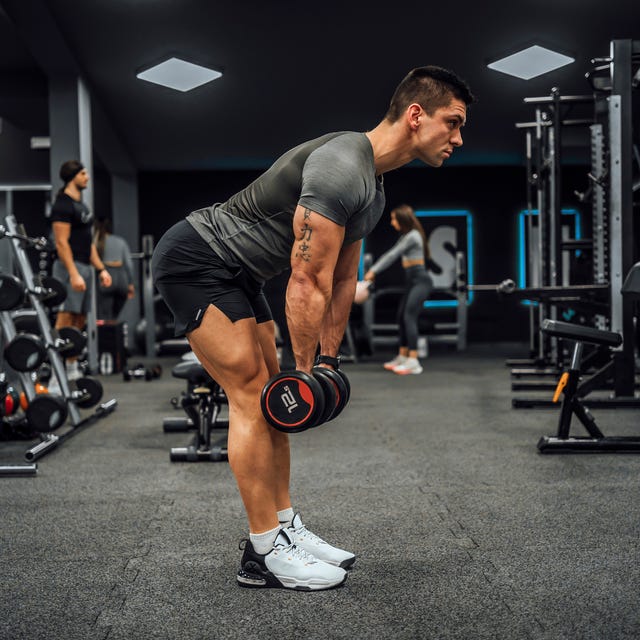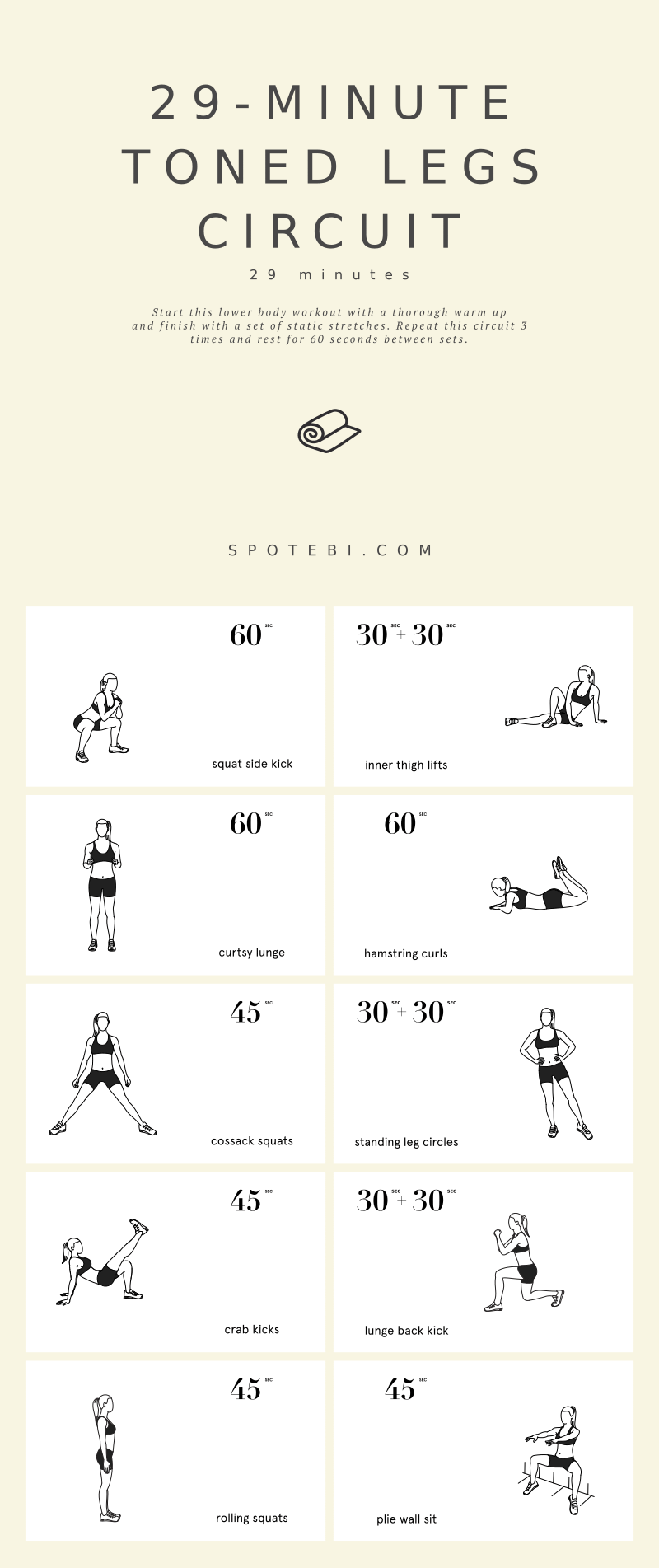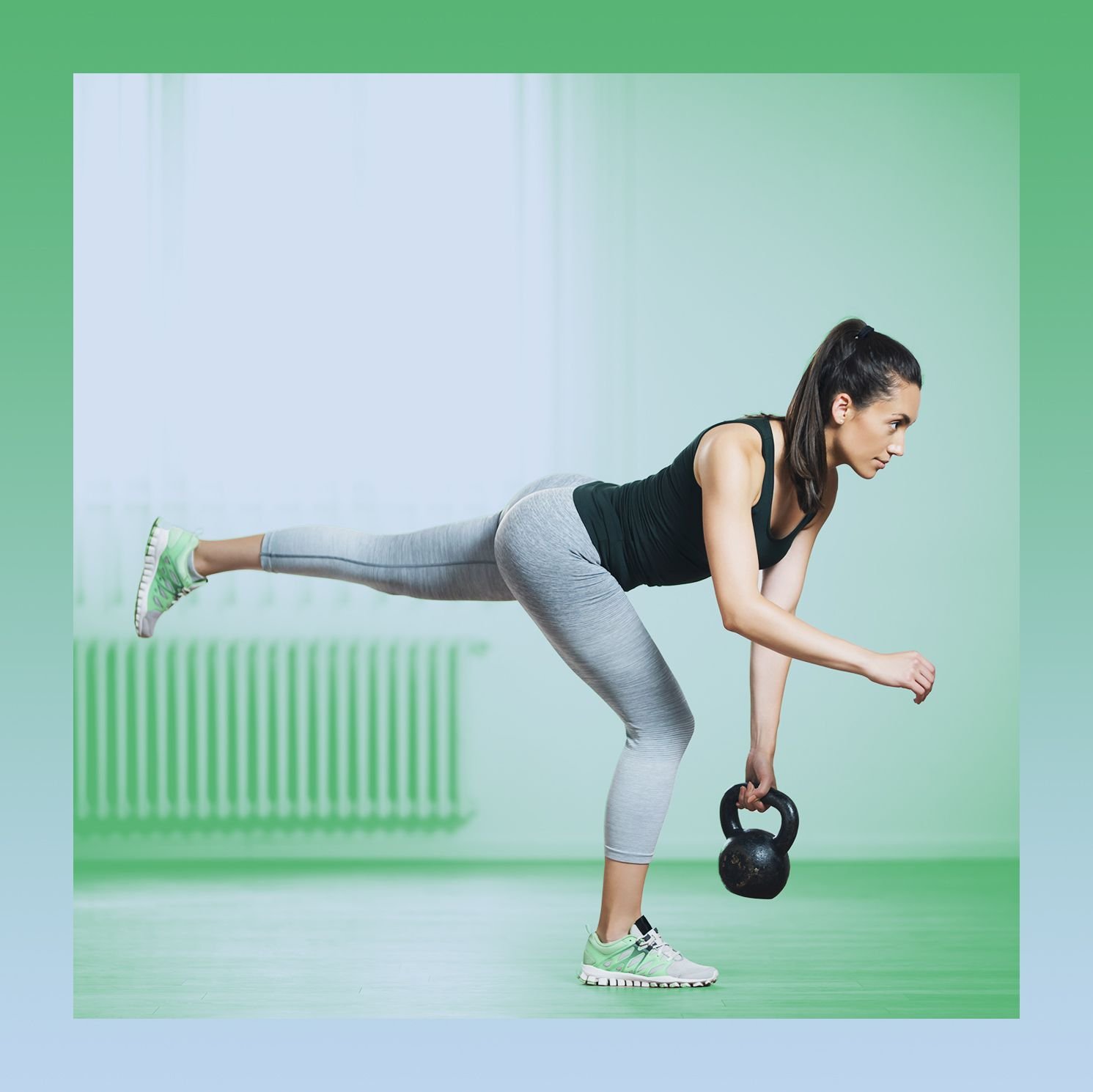Hamstring curls target the muscles in the back of the thigh. They are effective for strengthening and toning the hamstrings.
This exercise is commonly performed using a leg curl machine, available at most fitness centers, and it’s integral for promoting leg muscle balance and preventing injury. It’s essential for athletes who rely on their lower body strength and for anyone looking to improve their overall leg appearance and function.
Hamstring curls can also be done without equipment, using body weight or resistance bands, making them versatile for gym-based or home workouts. The movement involves bending the knees to curl the weight towards the buttocks while keeping the hips stable, engaging the hamstring muscles throughout the motion. To optimize your fitness routine and leg health, incorporating hamstring curls is a smart choice, especially for those desiring stronger, more resilient leg muscles.

Credit: www.menshealth.com
Hamstring Anatomy And Importance
Understanding the hamstring is crucial in fitness. It lies at the back of the thigh. It is vital for strong legs. Let’s explore its anatomy and why it matters.
Key Muscles Involved In Hamstring Curls
Hamstring curls target the back thigh muscles. These muscles have three main parts:
- Semitendinosus: Starts at the pelvis. Runs down the thigh.
- Semimembranosus: Also begins at the pelvis. Lies under semitendinosus.
- Biceps femoris: Has two parts. One begins at the pelvis, the other starts at the thigh bone.
Benefits Of Strong Hamstrings
Hamstring strength is key for activities. It helps in:
- Better posture: Keeps your spine aligned.
- Injury prevention: Reduces strain on the lower back.
- Improved sports performance: Essential for running and jumping.
- Easier daily movements: Squatting and walking rely on them.

Credit: www.spotebi.com
Preparing For Hamstring Curls
Hamstring curls strengthen the back of your thighs.
Proper preparation can help maximize benefits and minimize injury risk.
Warm-up Exercises
Starting with warm-up exercises boosts circulation and flexibility.
- Leg swings: Stand and gently swing each leg, forward and backward.
- Walking lunges: Step forward and lower your hips, then switch legs.
- High knees: Jog in place, lifting your knees high with each step.
Safety Tips And Injury Prevention
Maintaining safety prevents common hamstring injuries.
| Tip | Detail |
|---|---|
| Proper Form | Keep your spine neutral, and move smoothly. |
| Controlled Movement | Avoid jerking; curl and extend legs with control. |
| Adequate Resistance | Start with a comfortable weight to maintain form. |
Hamstring Curl Variations
Hamstring Curl Variations that target and strengthen your lower body.
Include these powerful moves in your routine for better mobility and strength.
Lying Hamstring Curls
This classic exercise focuses on the back of your thighs. Perform it with a machine at the gym or with a resistance band at home.
- Lie flat on your stomach.
- Place your legs under the pad of the machine.
- Curl your legs upwards, keeping your hips on the bench.
- Repeat for desired repetitions.
Standing Hamstring Curls
Great for balance and coordination, the standing version is a challenging twist.
- Stand with your feet hip-width apart.
- Use a wall or chair for support if needed.
- Curl one heel toward your buttock.
- Hold for a moment, then lower back down.
- Switch legs after each set.
Seated Hamstring Curls
Seated curls are perfect for isolating hamstring muscles with control.
| Sit on the machine | Place your legs behind the pad | Push down until your legs are extended | Bring the pad back up slowly |
Technique And Form: Maximizing Your Workout
Hamstring curls can make your leg muscles strong. But bad form can waste effort or cause injury. Let’s ensure you do it right for the best muscle growth and safety.
Proper Alignment And Movement
To start, lie on your belly with your legs straight. Keep your hips flat on the bench or mat. This is your starting position. Choose a weight that lets you do the exercise without pain.
- Place your ankles under the leg curl machine’s pad.
- Keep your toes pointed and pull your heels towards your buttocks.
- Squeeze your hamstring muscles as you lift the weight.
- Lift until your knees make a 90-degree angle.
- Lower the weight slowly back to the starting position.
Don’t let the weight drop. Control it. Always keep your movements smooth.
Breathing And Repetition Guidelines
Breath control helps with focus and energy. Inhale as you lie flat. Exhale when you pull the weight towards you. Inhale when you return to the start.
For repetitions, beginners should aim for 2-3 sets of 8-12 reps. More experienced? Try 3-4 sets of 12-15 reps. But listen to your body. If it hurts, stop. Add reps or weight only when you’re ready.
| Experience Level | Sets | Repetitions |
|---|---|---|
| Beginner | 2-3 | 8-12 |
| Intermediate | 3-4 | 12-15 |
Incorporating Hamstring Curls Into Your Routine
Many workouts focus on the front of the legs, like quads. Hamstring curls are crucial for balanced leg strength. They target the back of thighs, where muscles support knee and hip movements. Learn to include this effective move in your routine for better leg workouts.
Creating A Balanced Leg Workout
Leg days need balance. Quads and hamstrings work together for a functional and muscular lower body. Here’s how to blend hamstring curls for symmetry:
- Squat exercises: They focus on your quads.
- Lunges: Here, quads and hamstrings share the load.
- Hamstring curls: Aim at the hamstrings directly. Do these after major lifts.
Alternate compound and isolation exercises to hit all muscle groups. This variety enhances performance and prevents injury.
Frequency And Progression Strategies
Consistent efforts lead to stronger hamstrings. Here’s how often to include curls:
- Start with twice a week, aligned with leg days.
- As you progress, include variations or increase weight and reps.
- Listen to your body to avoid overtraining.
Track your progress every few weeks. If your curls get easier, challenge yourself more!
| Weeks | Sessions per Week | Repetitions | Weight |
|---|---|---|---|
| 1-4 | 2 | 12-15 | Light |
| 5-8 | 2-3 | 10-12 | Moderate |
| 9+ | 3 | 8-10 | Heavy |
Remember to mix in different hamstring exercises as well. Consistency is key to seeing results and gaining strength in your legs.
:max_bytes(150000):strip_icc()/12-Moves-to-Target-the-Backs-of-Thighs-Photo-by-Jena-Cumbo-8eeb6c8551f040b7a459d330402466ec.jpg)
Credit: www.shape.com
Advanced Training Tips
Looking to ramp up your hamstring curl routine? Advanced training tips can elevate your workout to new heights. Hamstring curls are critical for building leg strength, improving flexibility, and preventing injuries. To maximize benefits, experienced lifters can adopt new techniques.
Integrating Weights And Resistance Bands
Elevate hamstring strength by adding weights and resistance bands. Start by selecting the suitable weight for your fitness level. Place a pair of ankle weights to increase the resistance during leg curls.
Resistance bands offer another layer of challenge. Secure the band to a stable object, and loop it around your ankles. The tension should be tight enough to add resistance but not so much that it hinders movement.
Here’s a quick step-by-step guide:
- Choose the correct resistance level for your band or weight.
- Secure the equipment properly to ensure safety.
- Perform the curl with controlled movements.
- Maintain core engagement throughout.
Challenges And Variations For Experienced Lifters
For those seeking a greater test, challenge your muscles with new variations. Keep your routine fresh and push your limits.
| Variation | Description | Benefit |
|---|---|---|
| Single-leg Curls | Perform curls using one leg at a time. | Targets muscle imbalances. |
| Stability Ball Curls | Use a stability ball for leg curls. | Engages core, enhances balance. |
| Slider Disc Curls | Perform curls using slider discs under feet. | Improves coordination, control. |
Experiment with the tempo of your exercises slow down or introduce isometric holds at the peak contraction point for intensity. Track your progress and consistently challenge your personal best.
- Focus on eccentric phase by lowering slowly.
- Add isometric holds for 3-5 seconds.
- Adjust tempo to vary intensity.
Recovery And Aftercare
Ensuring proper recovery and aftercare is crucial after performing hamstring curls. This section delves into the best practices post-exercise to help your muscles recover efficiently, enhancing your long-term fitness journey.
Stretching And Cool-down Recommendations
Stretching is vital for maintaining flexibility. Post-workout, aim for 5-10 minutes of cool-down stretches. This may include:
- Standing hamstring stretch
- Lying hamstring stretch
- Seated hamstring stretch
A cool-down routine helps in reducing muscle tightness and preventing injury. Incorporate deep breathing to lower your heart rate gradually.
Importance Of Rest And Nutrition
Rest helps your muscles repair and grow stronger. Always plan for at least one full rest day between sessions targeting the same muscle group.
Nutrition plays a significant role in recovery. Focus on including:
| Macronutrient | Food Sources |
|---|---|
| Protein | Chicken, tofu, lentils |
| Carbohydrates | Whole grains, fruits, vegetables |
| Fats | Avocados, nuts, seeds |
Hydration is equally essential. Drink water throughout the day and especially after your workout to replenish fluids.
Frequently Asked Questions For Hamstring Curls
What Are Hamstring Curls Good For?
Hamstring curls strengthen the muscles in the back of your thighs. This exercise improves leg stability and enhances joint flexibility.
How To Do Hamstring Curls Correctly?
Lie flat on your stomach, place heels under padded lever, and ensure knees are aligned. Firmly grasp the support handles. Curl legs up towards your glutes, maintaining a controlled movement. Slowly return to the starting position, avoiding a full leg extension.
Repeat for desired reps.
How Do You Do Hamstring Curls Without A Machine?
To do hamstring curls without a machine, lie on your stomach and use a resistance band around your ankles, curling your heel towards your buttocks. Alternatively, perform a bodyweight curl with a fitness ball by lying on your back and placing your feet on the ball, then lifting your hips and bending your knees to roll the ball towards you.
Do Hamstring Curls Hit Glutes?
Hamstring curls primarily target the hamstrings but also engage the glutes to a lesser extent. They are not the main focus but receive some stimulation.
Conclusion
Harnessing the power of hamstring curls is a game-changer for leg strength and stability. Regularly incorporating this exercise can lead to significant improvements in your lower body fitness. Embrace the curl, and let your hamstrings reap the benefits for a more balanced and dynamic you.

